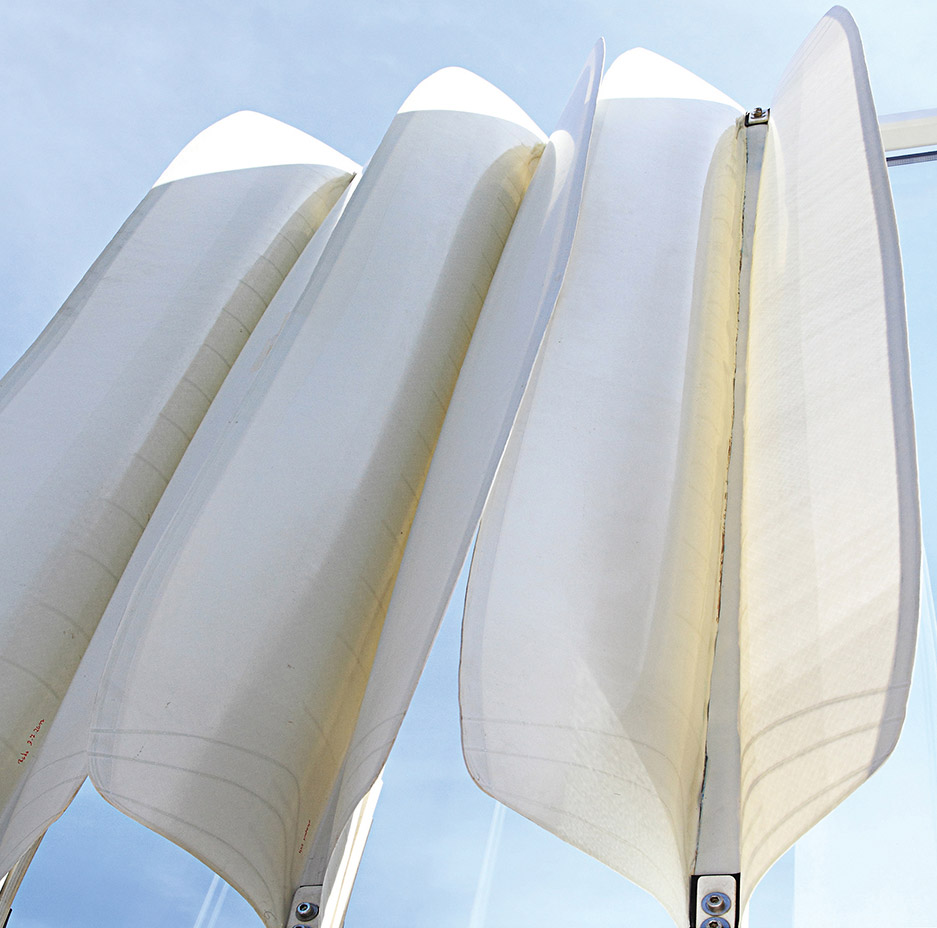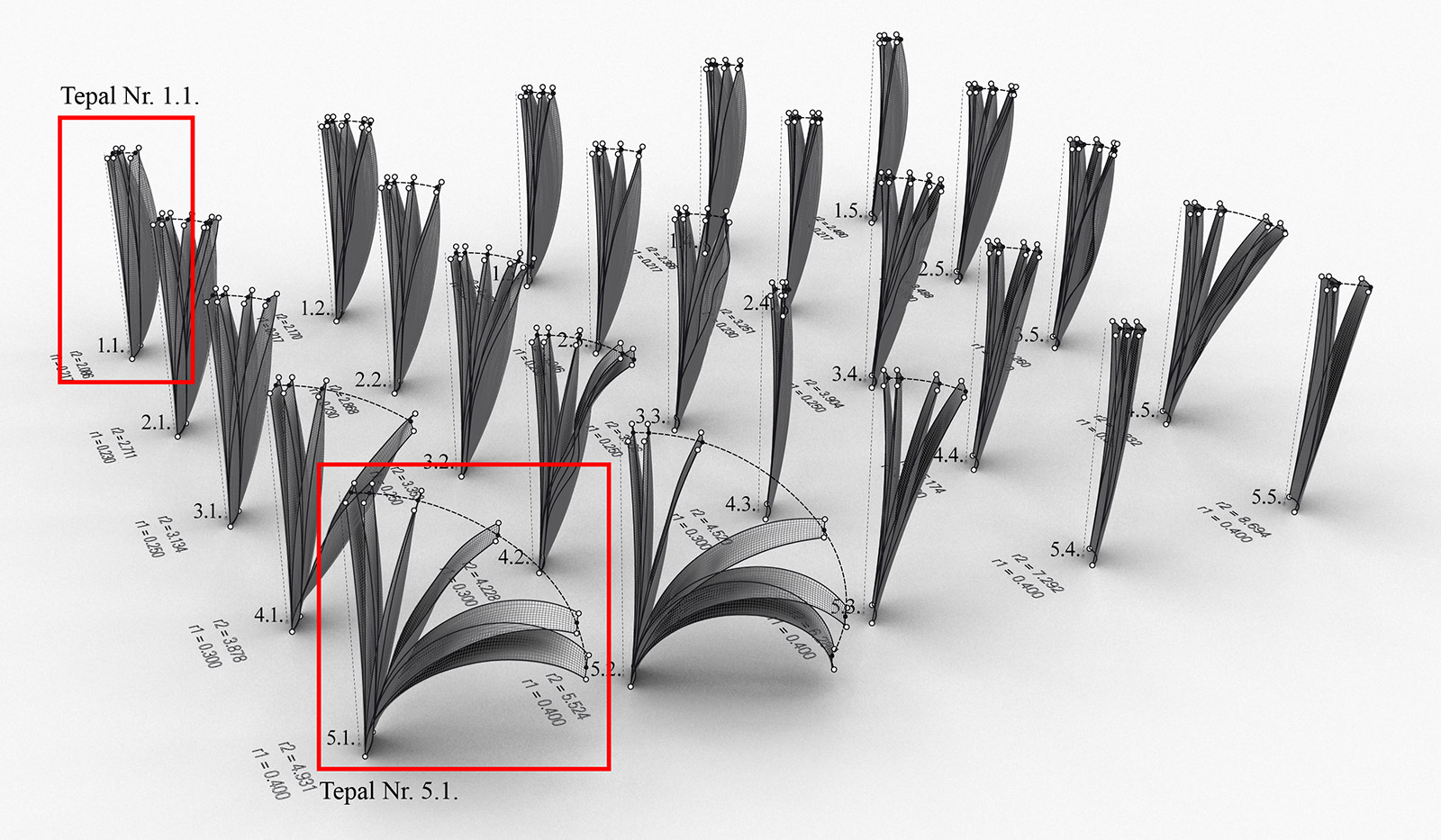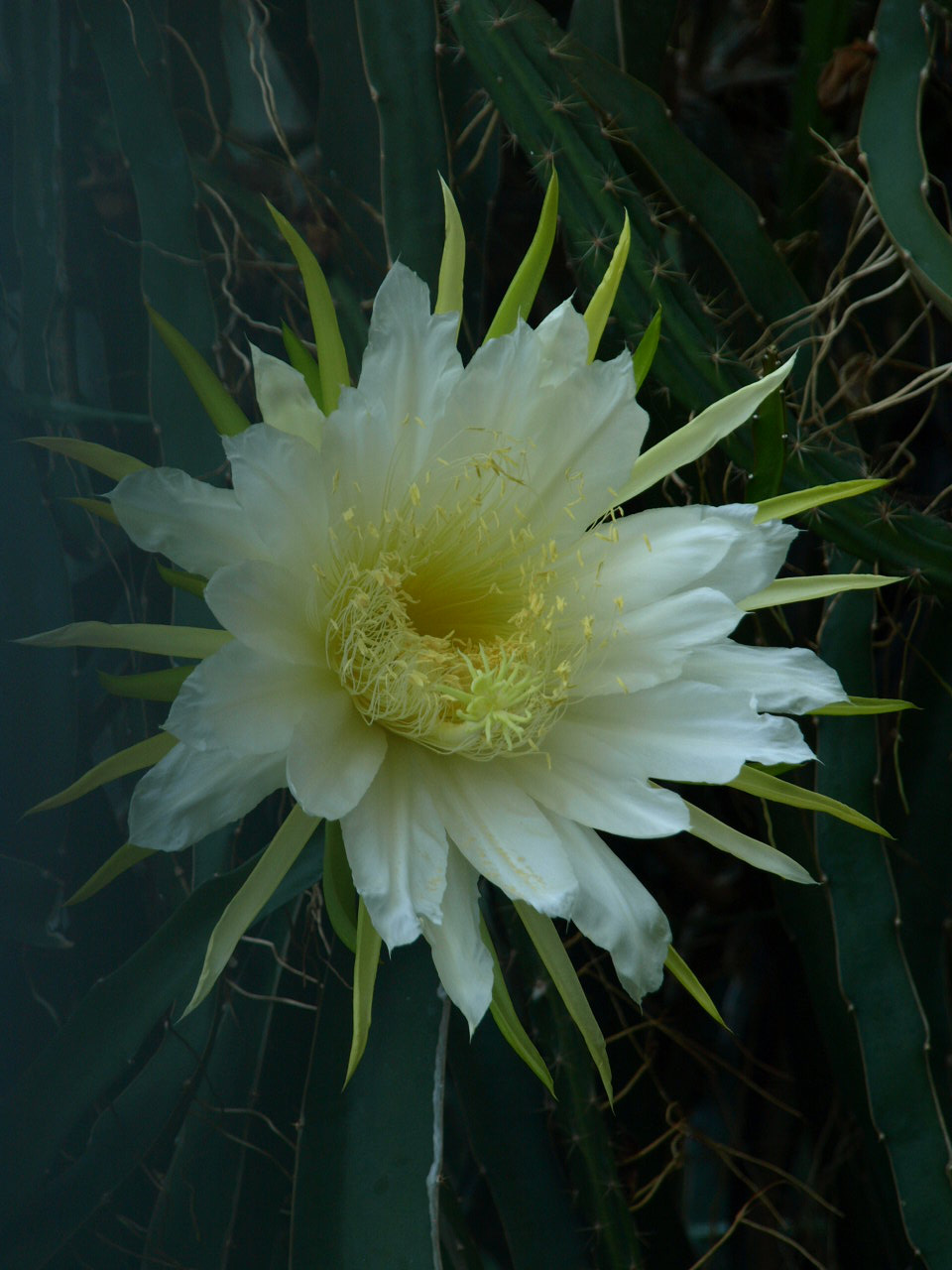A04 > Kinematics of planar, curved and corrugated plant surfaces as concept generators for deployable systems in architecture
Principal Investigators
Prof. Dr.-Ing. Jan Knippers (S-ITKE)
Prof. Dr. rer. nat. Thomas Speck (FR-PBG)
Prof. Dr.-Ing. Manfred Bischoff (S-IBB)
Associated scientists
Prof. Dr.-Ing. Götz Gresser (S-ITFT)
Research Team
Larissa Born M.Sc.
Axel Körner, M.Sc.
Renate Sachse (geb. Lehmann), M.Sc.
Anna Westermeier, M.Sc
The urgent demand for more energy-efficient and sustainable architecture is leading to a growing interest in adaptive building envelopes that can adjust themselves to changing external environmental conditions or internal comfort requirements. To date, these systems have been technically conceptualized by either rigid components or soft textiles joined along a straight axis of translation and/or rotation by highly strained hinges or bearings. These concepts have their limitations in building construction for several reasons:
– In particular, larger scale adaptive planar or curved structures, e.g. retractable roofs, are unique constructions designed once for specific functional requirements without prototypes or extensive test runs. The building is the prototype and has to function on the first attempt.
– Because of the growing interest of architecture in non-standard geometries, adaptability to a wide range of spatial configurations is of increasing importance. This is a specific challenge for medium-scale components such as louvers or blinds. Adaptation to irregular geometries can often only be achieved with additional mechanical complexity making them often expensive, prone to failure and maintenance-intensive.
For kinetic systems in building construction, the criteria of »robustness« and »adaptability« are usually of major importance, whereas other aspects such as as »accuracy« or »velocity« are of less relevance.
Movements of many plant surfaces fulfil these criteria. Petals and leaves show countless robust motion principles important for many biologically vital functions. They are based on the locally adapted stiffness of their components and avoid highly concentrated strain. An important point is the elucidation of the patterns of movement and principles of actuation and its interplay with the structural set-up of the mechanism: plant movements can be actuated hydraulically in an active way by turgor changes that lead to reversible (nastic) movement or irreversibly (tropistic) growth by cell-shape changes, in a passive manner by hygroscopic swelling and shrinking or because of cohesion forces. Other mechanisms use the release of stored elastic energy in pre-stressed structures or are initiated by external mechanical forces.
The project aims to improve the understanding of the mechanical principles that underlie the movements of plant surfaces by quantitatively analysing their biomechanics and by simulating the movement and actuation mechanisms with kinetic FE models. The biological concept generators are selected such that diverse form generation patterns are included and various external and autonomous actuation mechanisms are covered. Variation of the geometrical and mechanical parameters in the FE models will improve insights into the evolutionary development of the form-structure-function relationship. In parallel, investigations will be carried out as to whether and, if so, how the mechanisms can be abstracted, scaled-up and integrated into kinetic structures for architecture that can be adapted to a wide range of geometrical and structural conditions. Technical implementation (in close cooperation with A03) is based on the use of fibre-reinforced polymers with locally adapted stiffness through variation in fibre placement.
The project will develop a generalized and comparative methodology for the analysis, functional description, simulation and classification of movements of planar, curved and corrugated surfaces found in various plant organs and for transfer between biological studies and technical implementation.

Development of a façade mock-up with Flectofins® at clauss markisen (photo: Julian Lienhard)
Strelitzia reginae being pollinated by a southern masked-weaver bird (Ruslow Koorts, Pretoria, South Africa)
The diversity of opening and closing mechanisms found in angiosperm flowers are used as concept generators for bio-inspired technical folding and unfolding mechanisms; flower of the Bell of the Night (Hylocereus undatus, Cactaceae) (Plant Biomechanics Group Freiburg)
Trap leaf of a venus fly trap (Dionaea muscipula); the two halves of the modified trap leaf show snap buckling, speeding up the movement when being touched by prey animals (Plant Biomechanics Group Freiburg)





